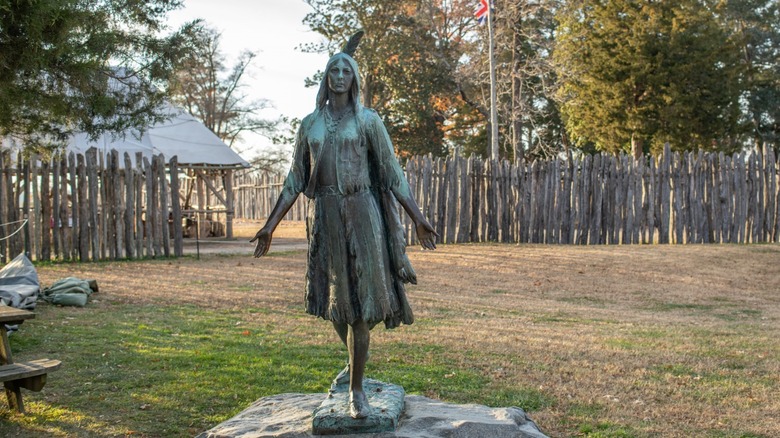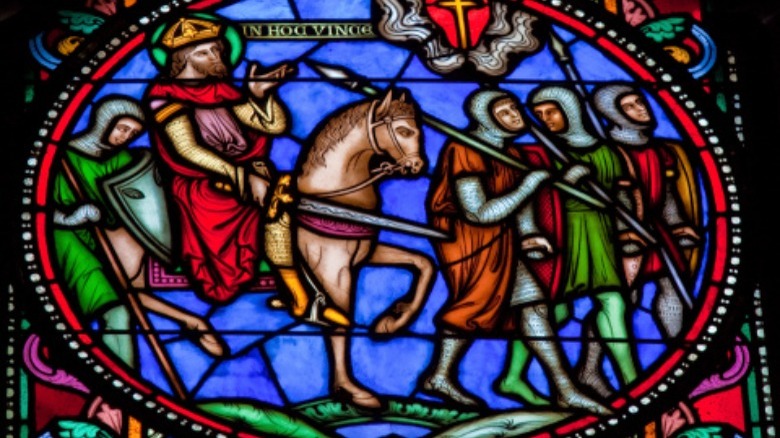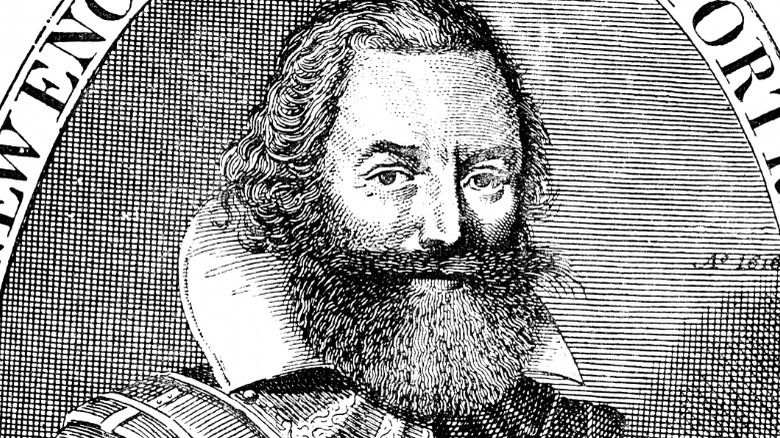The Scottish Ballad That Mirrors The Relationship We Know Of John Smith And Pocahontas
The story is familiar to most Americans: John Smith, an early English settler in Jamestown, Va., was captured by local Powhatan Native Americans and set to be executed. Miraculously, at the last minute, he was saved by the chief's beautiful daughter, Pocahontas. Lately, however, historians have questioned whether this really happened. The source of the story is Smith's own book, "Generall Historie of Virginia, New-England, and the Summer Isles," according to Time Magazine. Smith claimed he and Pocahontas were in love, despite the fact that she would have only been 11 or 12 at the time (via Smithsonian Magazine).
The scene he described had him surrounded by Powhatan men with clubs and Pocahontas laying her head on his so the men wouldn't hit him. Modern historians have postulated that this was actually an adoption ceremony that Smith simply misunderstood, because Chief Powhatan thereafter considered him a son, according to Time Magazine.
There's another theory, however: that Smith might have lifted the entire story out of a Scottish folk song called "Lord Bateman" or "Young Beichan" (via Smithsonian Magazine). Where does that theory come from?
Lord Bateman's tale
The Scottish ballad "Lord Bateman" dates to the late 18th century, according to the American Antiquarian Society, but the story it tells is much older. The book "Contested Images: Women of Color in Popular Culture" explains the song's lyrics closely resemble a legend about Gilbert à Becket, father of Saint Thomas à Becket. The saint was born in 1118, so the story about his father takes place before that (via Britannica).
According to "Contested Images," Gilbert à Becket goes on a crusade to a pagan land with darker-skinned inhabitants, but is captured and imprisoned by this kingdom's ruler. However, the king's daughter falls in love with him and bargains for his release. The American Antiquarian Society adds that the princess tells à Becket of her love, and he agrees to marry her in seven years, then leaves her country, where she stays and pines for him. Unlike Pocahontas and John Smith, they do end up together. Like Pocahontas, she converts to Christianity (via "Contested Images").
John Smith and the ballad
A University of Rochester article says this popular story was repeated in many books as late as the 19th century, even appearing in Charles Dickens' "A Child's History of England." However, it isn't found in any source from à Becket's time period, including those about his famous son (via "Life and Times of Thomas Becket" page 16 footnote). It only appeared 300 years later, leading historians to assume it isn't true (via "Thomas Becket, Archbishop of Canterbury" page 4). Still, the ballad — with its renamed main character — remained popular too, and settlers brought it over to America with them, per Mainly Norfolk. However, there aren't any clues as to whether John Smith knew it or used it for inspiration, according to "Contested Images."
Smithsonian Magazine says Smith "marketed" his story by making it romantic. He might have been trying to sell his book or attract settlers to Virginia. Historian Camilla Townsend from Rutgers University says the story remained popular because it reflects well on white, American culture: the native princess liked it so much, she wanted to become a part of it. Townsend and others are now working to set the record straight


